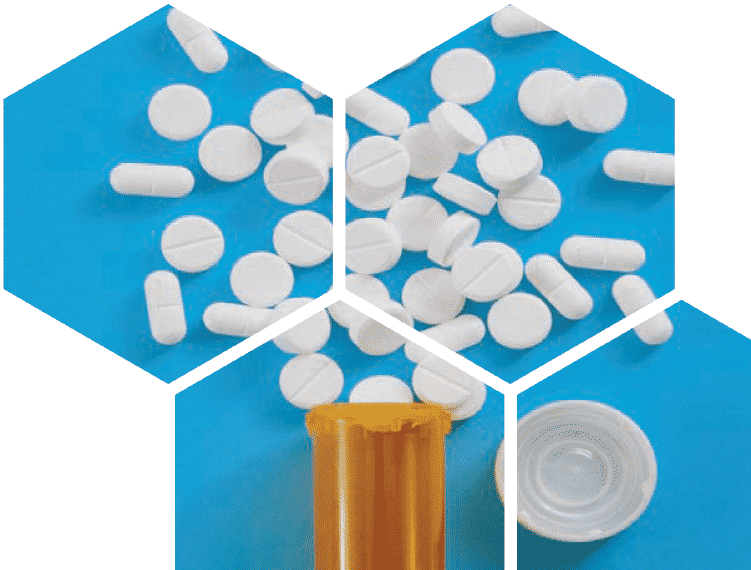Will your testing program find the “Invisible Opioid”?
If you only use a 5-panel drug test, you won’t see danger hiding in plain sight.
> Introduction
2021 is a year to gaze into our drug-testing crystal ball. As the pandemic began to gather momentum in early 2020, with a population largely isolated and out of any normal routines, it was predictable—in fact Psychemedics did in our paper “Rebuilding The Workplace After COVID-19”—that increased substance use and abuse was a likely outcome. It has been.
Just as predictable was that cartels and distributors would adapt to closed borders, and according to the Drug Enforcement Administration those illicit manufacturers, distributors and cartels have done just that. Entering 2021, there are new challenges with which drug program administrators must cope.
There were over 81,000 drug-related deaths between July 2019 and July 2020—the most ever recorded- with heroin, cocaine and methamphetamines contributing. But, according to the CDC, that 20% increase in drug-related deaths was driven largely by this Invisible Opioid.
> Challenges
Fentanyl may be your most urgent workplace threat. Here is why.
1. All the opioid risks. Fentanyl has all the same impacts on a user’s physiology and ability to function as any other opioid. It can cause the nausea, sedation, confusion, euphoria, diminished motor skills and drowsiness that has no place in a refinery, on a manufacturing line or any place that sound judgment is required. In extreme cases it can cause fainting, coma or death.
2. Dangerously potent. This opioid’s kick is unlike others. Consider two data points:
>2 milligrams, or a dose the size of two grains of salt is enough to kill an adult.
> According to the DEA, it is more powerful than morphine.
3. Driving increasing mortality rates. As overall death rates set new records in 2019 and 2020, deaths involving fentanyl also increased.
>38% nationally
> Over 50% in 18 reporting jurisdictions
> 98% in 10 western states
Psychemedics offers the only drug test
using hair analysis that is cleared by the
FDA to detect fentanyl.
Deaths by fentanyl are up nearly 40%
during the pandemic—and it is invisible to
your standard 5-panel test.
Undetected
fentanyl could be
a “hidden high” for users in your
workplace.

Fentanyl may be your most urgent workplace threat. Here is why.
4. Availability and Accessibility. Fentanyl is in ample supply across the country, with 17 of the DEA’s 23 Field Divisions indicating that fentanyl availability was high—a continuation of a 2019 trend. But more troubling is the DEA conclusion that counterfeit pills–actually fentanyl pressed and stamped to resemble hydrocodone, Percocet, Xanax, and others–are now present in all 50 states. Perhaps most vexing for law enforcement is that these pills are available to anyone online via the so-called “dark web,” delivered anywhere by post and in innocuous packaging.
5. It is invisible to the 5-panel test. Many program administrators might elect not to test for fentanyl. In the past, it was nearly always present with cocaine or other drugs, and users could be identified by those. But in 2020, well over 50% of all detected fentanyl was standalone, and it won’t show up on the 5-panel test. Just as impactful on workplace safety as oxycontin, hydrocodone, morphine, or other members of the family, it truly is the Invisible Opioid.
Consider this. The DEA 2020 National Drug Threat Assessment finds fentanyl as a single drug entity in approximately 58 percent of fentanyl reports to its
National Forensics Laboratory Information System in 2019 You will not detect that user with your standard test
> Our take away
Ignoring this threat is a risky bet.
In the March 2020 paper, “Rebuilding The Workplace After COVID-19“, we presented evidence supporting our position that isolation and anything-but-normal routines during the pandemic would exacerbate substance abuse among drug users and potentially become a new habit for others. Recent
CDC data validates that position, and DEA data highlights the challenge that illicitly-produced fentanyl pressed to resemble commonly-abused drugs present to drug program administrators in 2021.
> Completely invisible to standard workplace drug screens.
> Availability and accessibility increasing as distributors ramp up.
> Affects motor skills, judgment, and ability to perform tasks safely.
> Will soon be known to drug users as a “hidden high” in the workplace.
> Conclusion
Sometimes running with the herd can take you over a cliff.
The DOT 5-panel test remains the lone protocol for a large number of corporate drug testing programs. Today, that herd mentality may feel comfortable, but reliance on the 5-panel alone may be a highly risky bet in light of evolving dynamics in the drugs-of-abuse landscape.
Ask yourself.. are you safe running with the herd, or are we warning you of a cliff that lies ahead?

Fentanyl may be your most urgent workplace threat. Here is why.
For over three decades, Psychemedics Corporation has been the world’s leading drug testing company using hair. Psychemedics’ patented hair analysis technology is trusted by Fortune 500 companies, police forces, courts, schools and parents all over the world

